Eagle syndrome (styloidogenic jugular venous compression syndrome)
Presentation
Headache
Patient Data
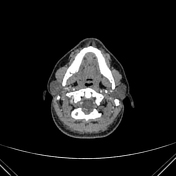

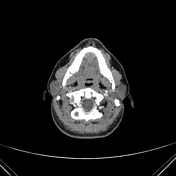



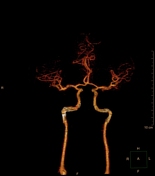
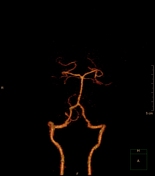
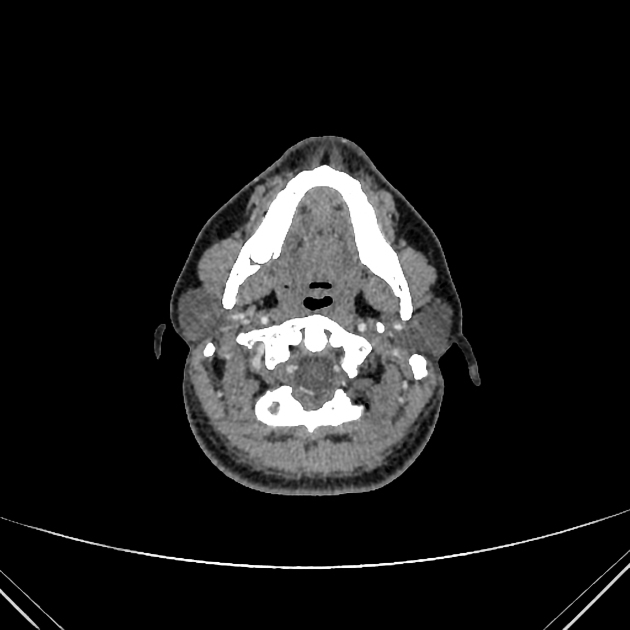
Mild compression of the right internal jugular vein between the styloid process and transverse process of C1 with few right para vertebral prominent veins (mild stylo-jugular venous compression syndrome).
On the left side, left styloid process is elongated but left internal jugular vein is not compressed.
Patent enhanced cerebral veins and dural sinuses showing homogenous luminal enhancement with no evidence of thrombosis. No AVMs.
Case Discussion
Eagle syndrome is caused by symptomatic elongation of the styloid process or calcified stylo-hyoid ligament.
It may be discovered during investigation of specific clinical symptoms related to structures that are compressed (e.g. cranial nerves, the carotid artery, internal jugular vein)
Compression of the internal jugular vein may lead to increased intracranial pressure causing headaches.
It is important to note that many people with elongated styloid processes are entirely asymptomatic.
In this case, the right internal jugular vein is compressed, which may be the cause of the headache or an incidental unrelated finding. Clinical correlation with fundoscopy, CSF opening pressures, and the character of the headache may be helpful.




 Unable to process the form. Check for errors and try again.
Unable to process the form. Check for errors and try again.